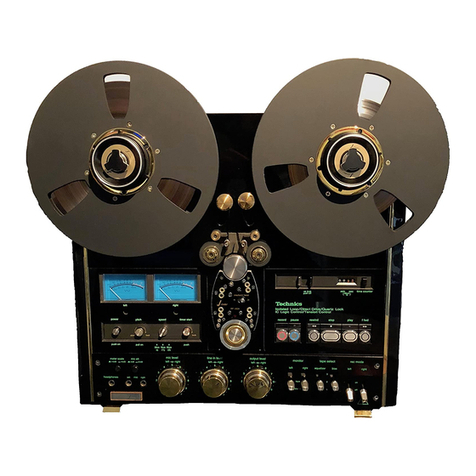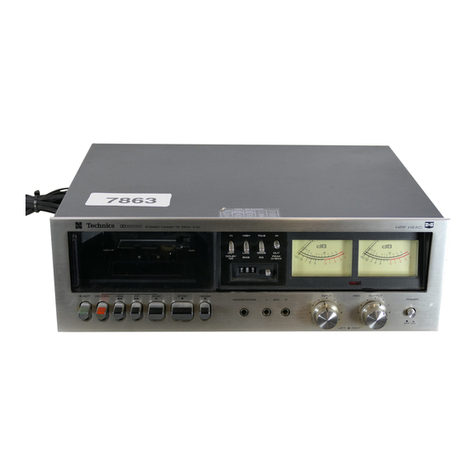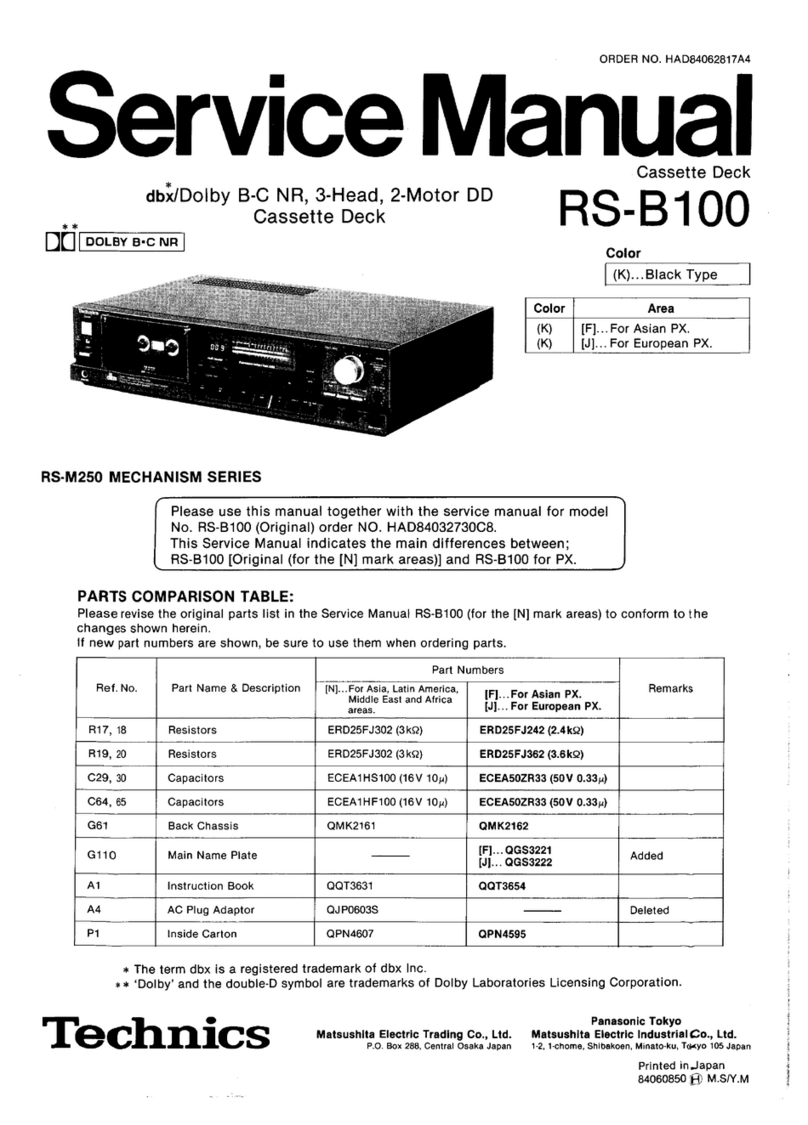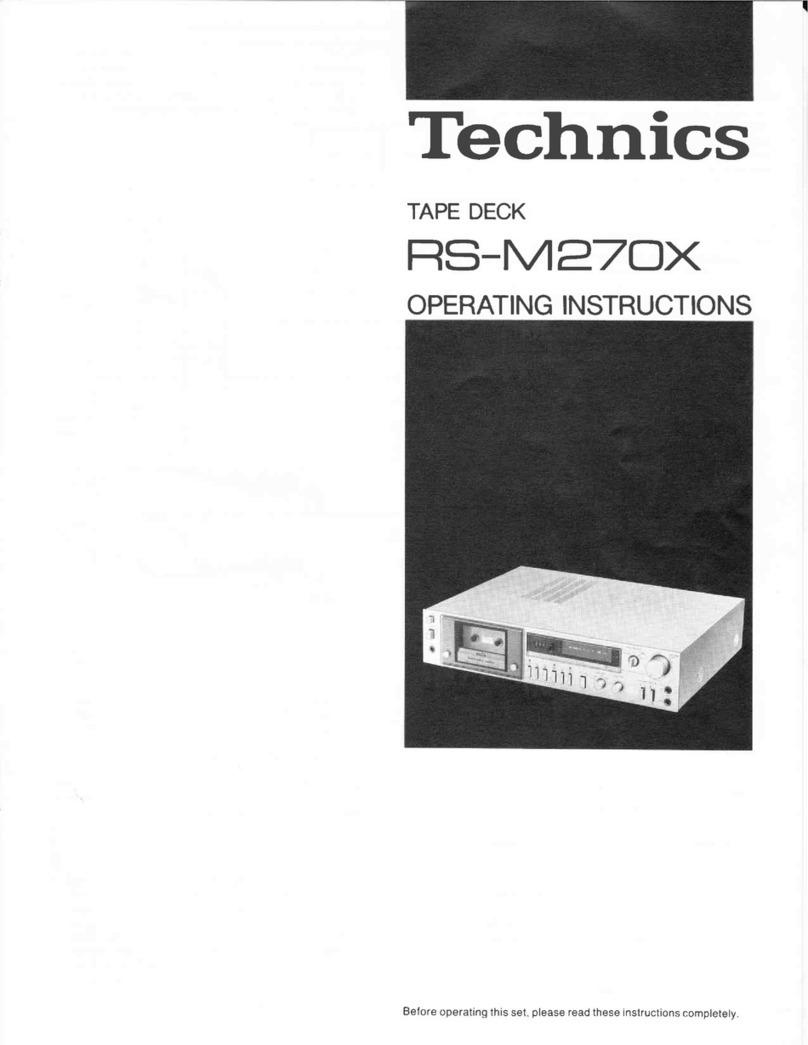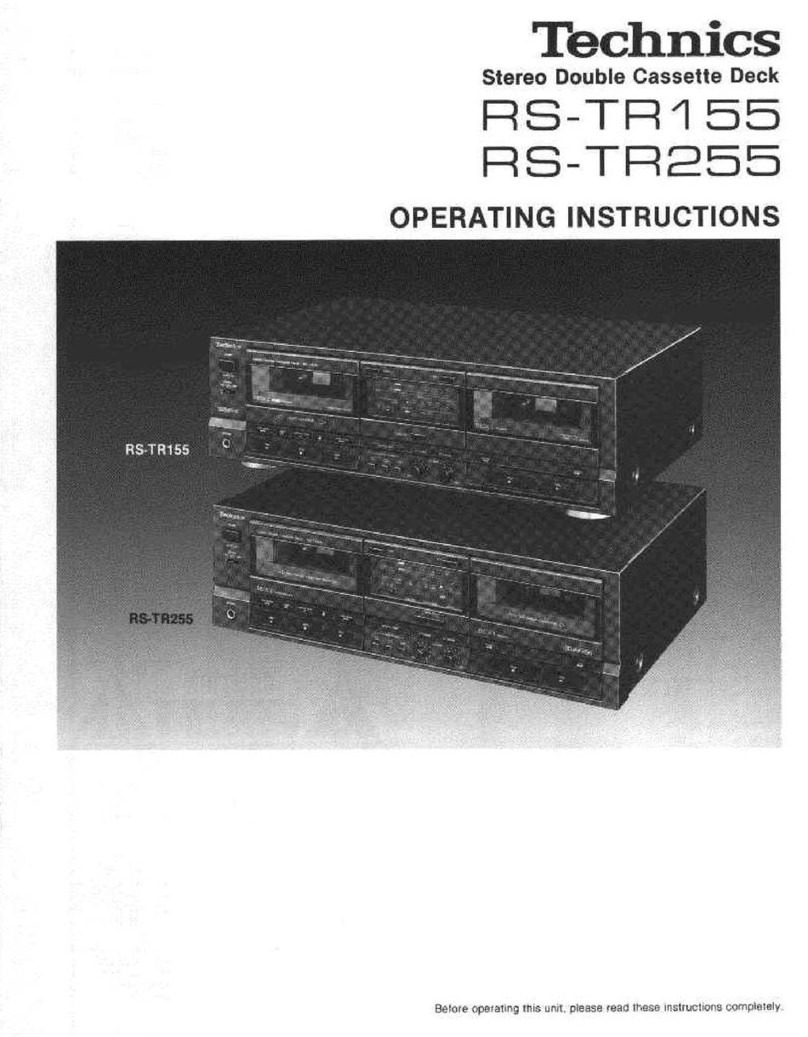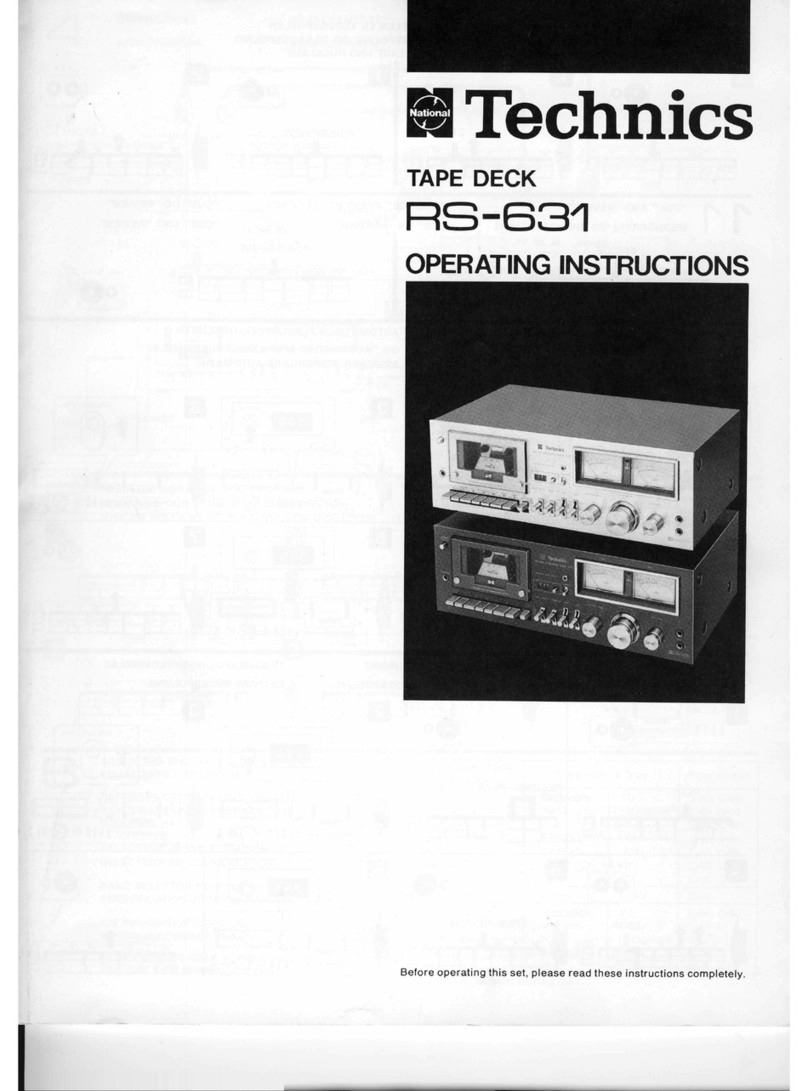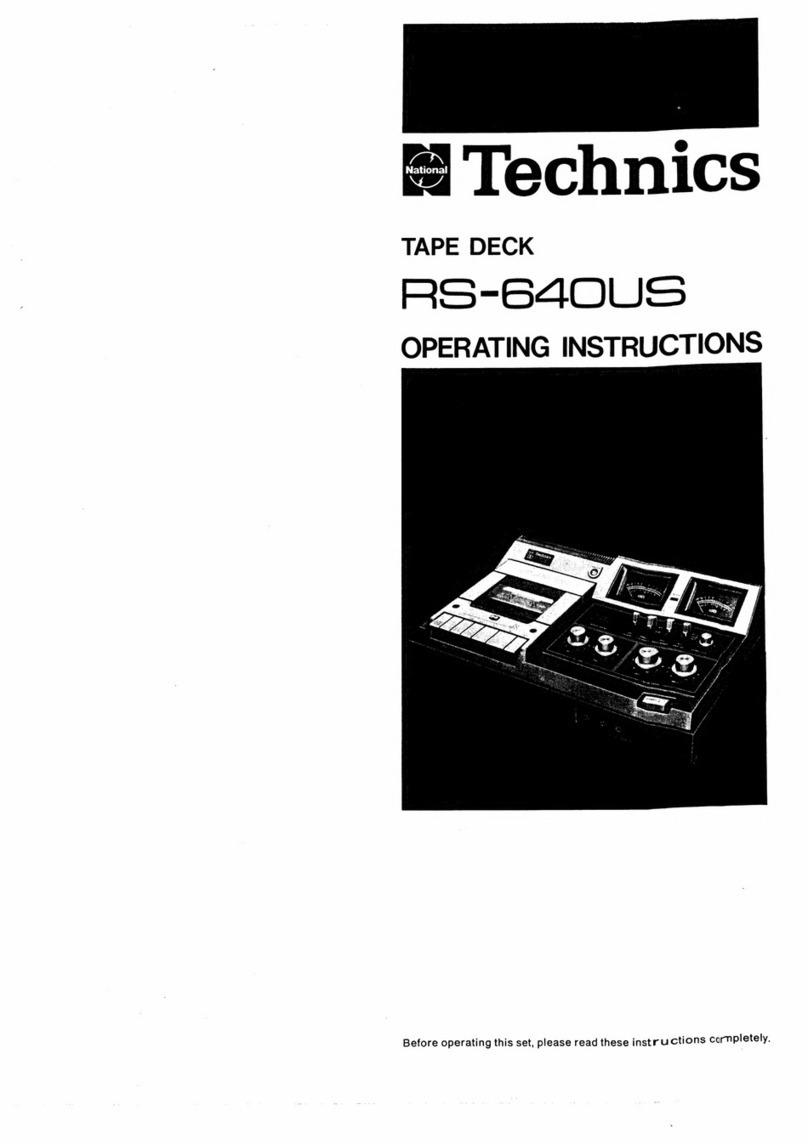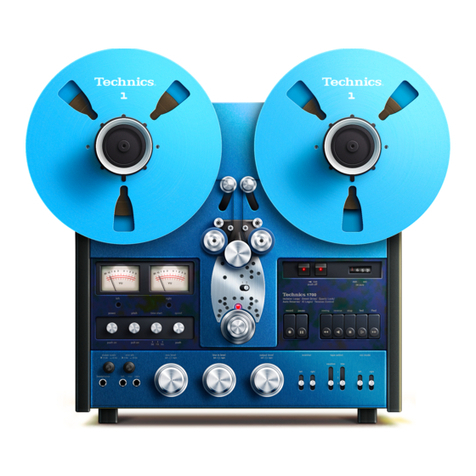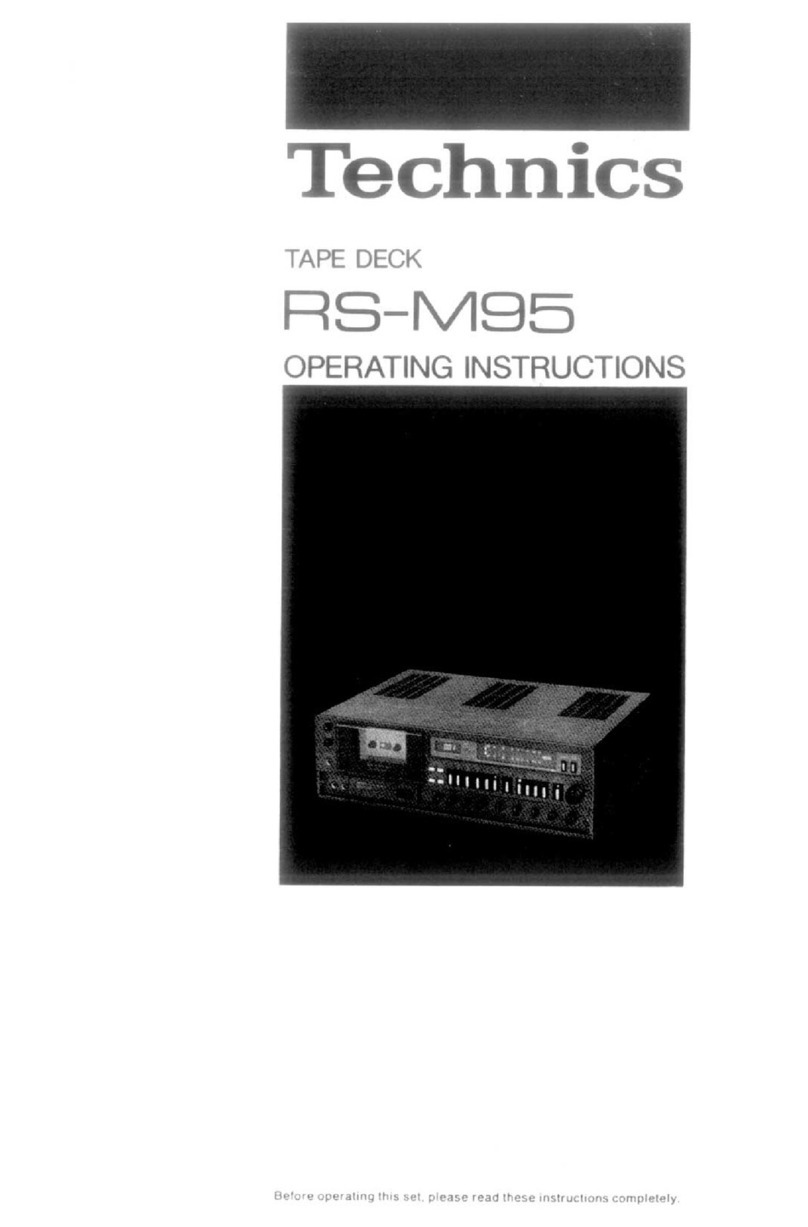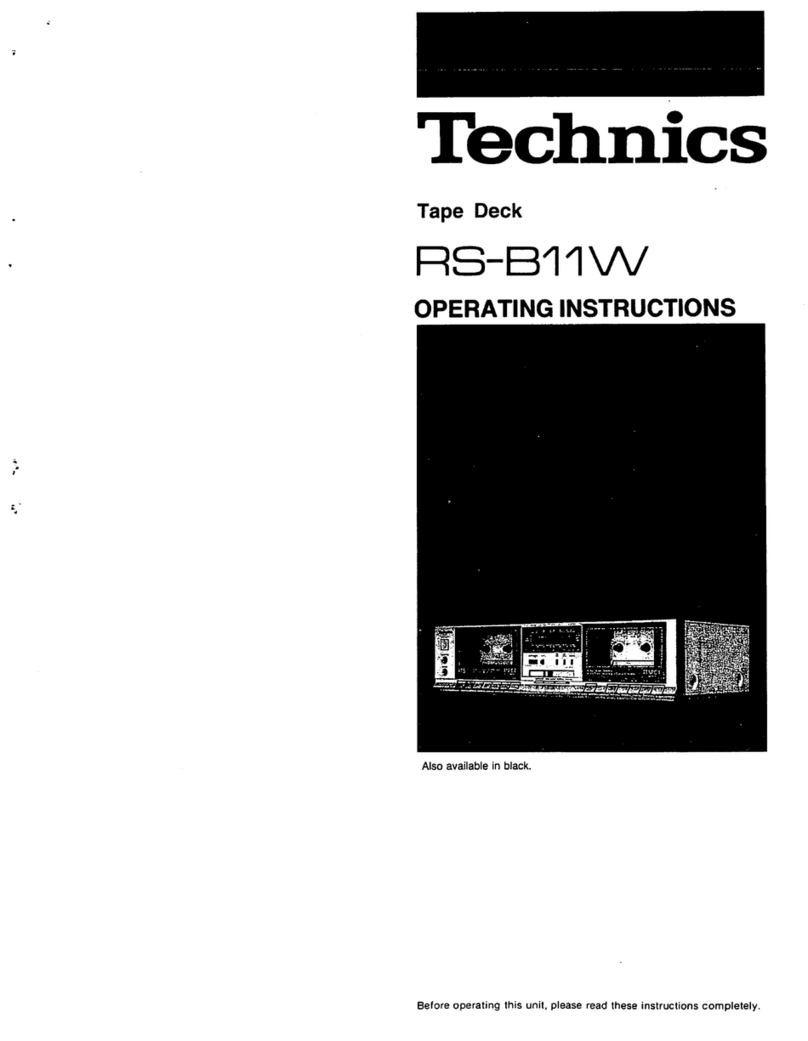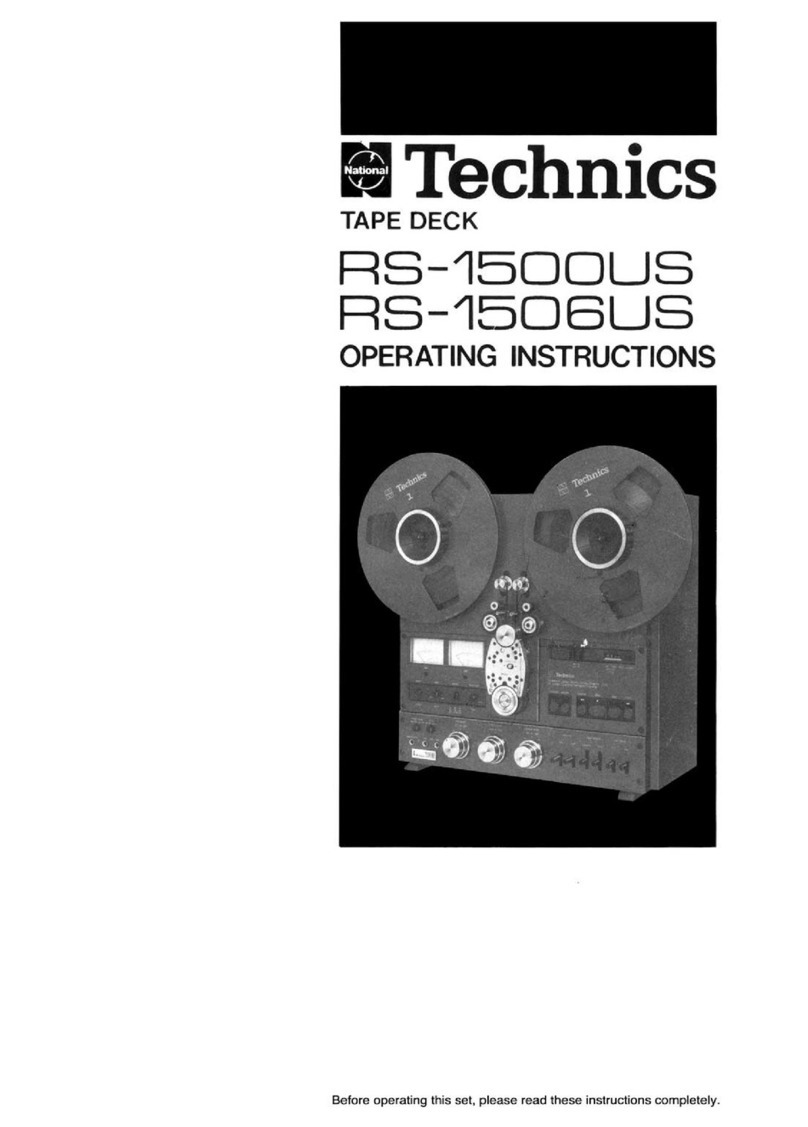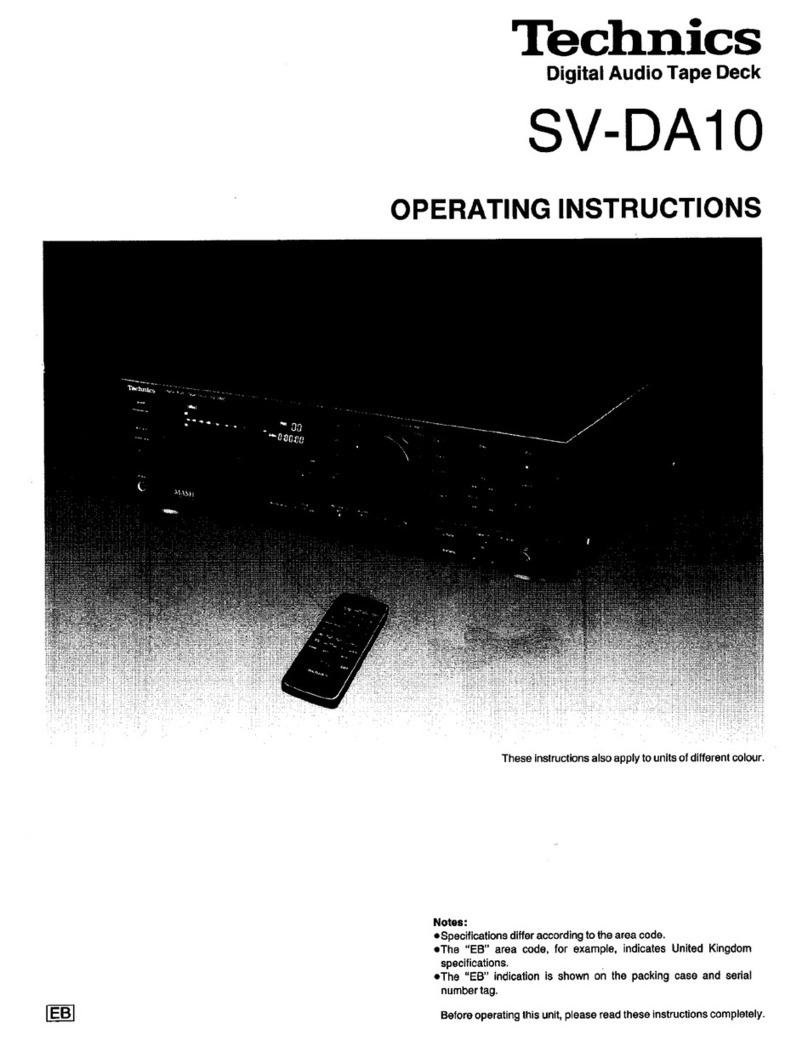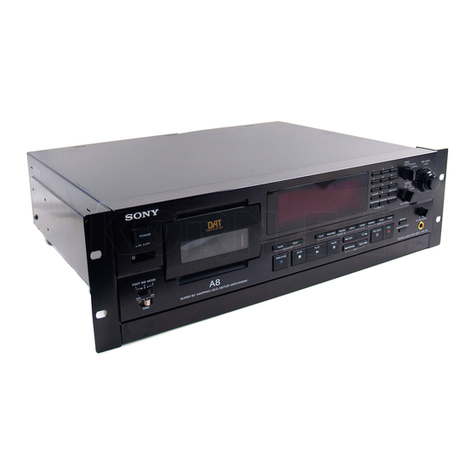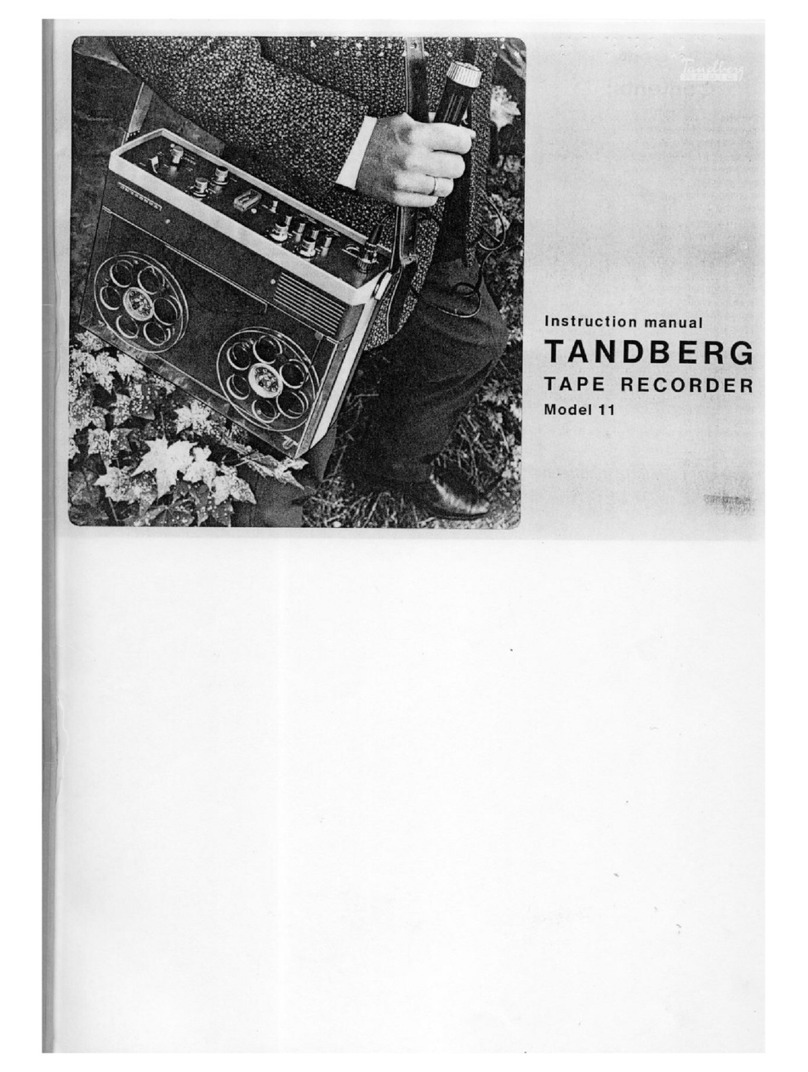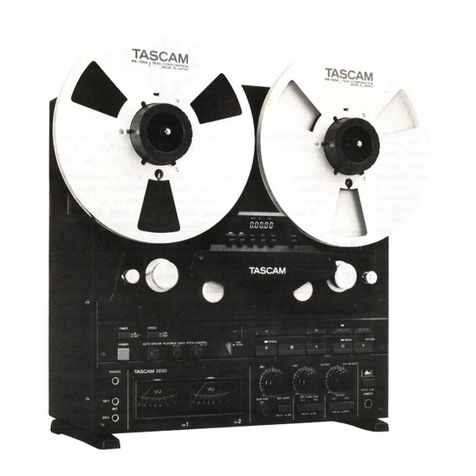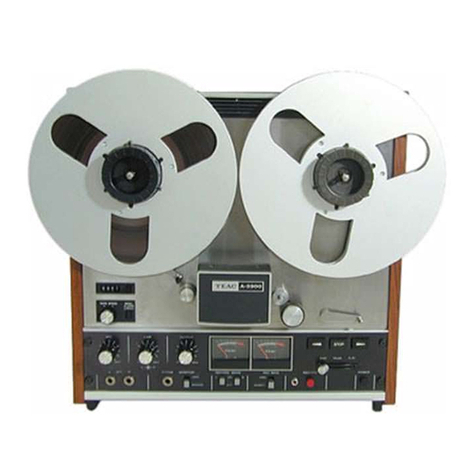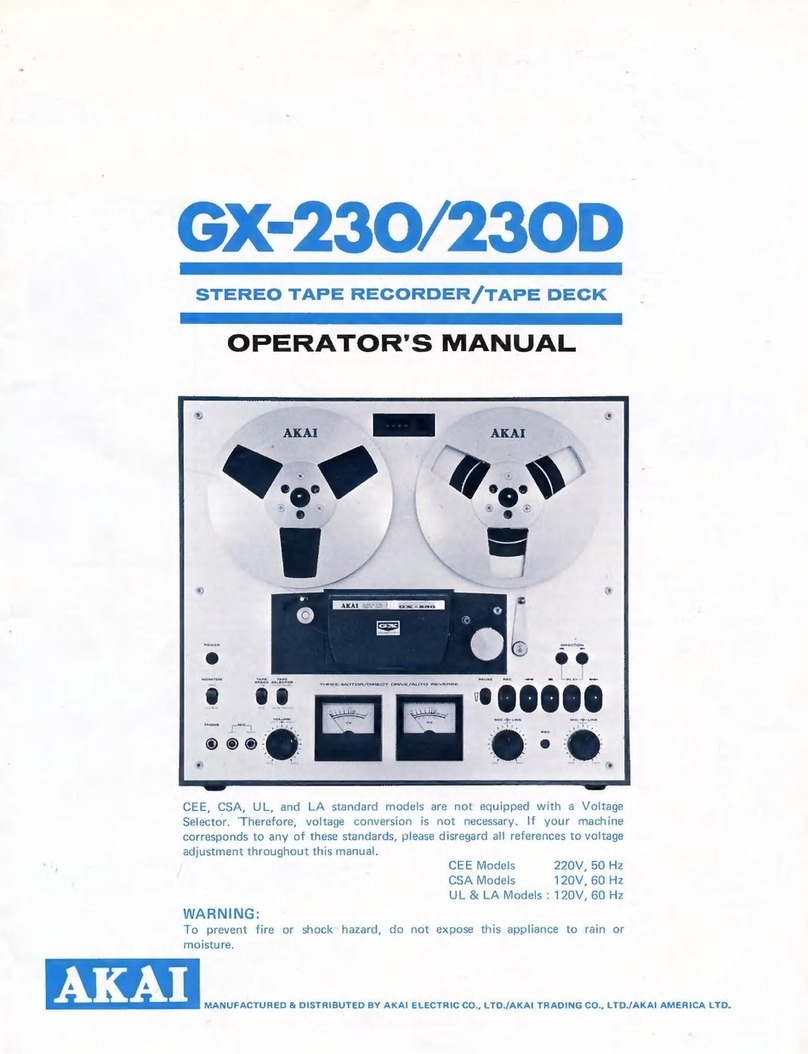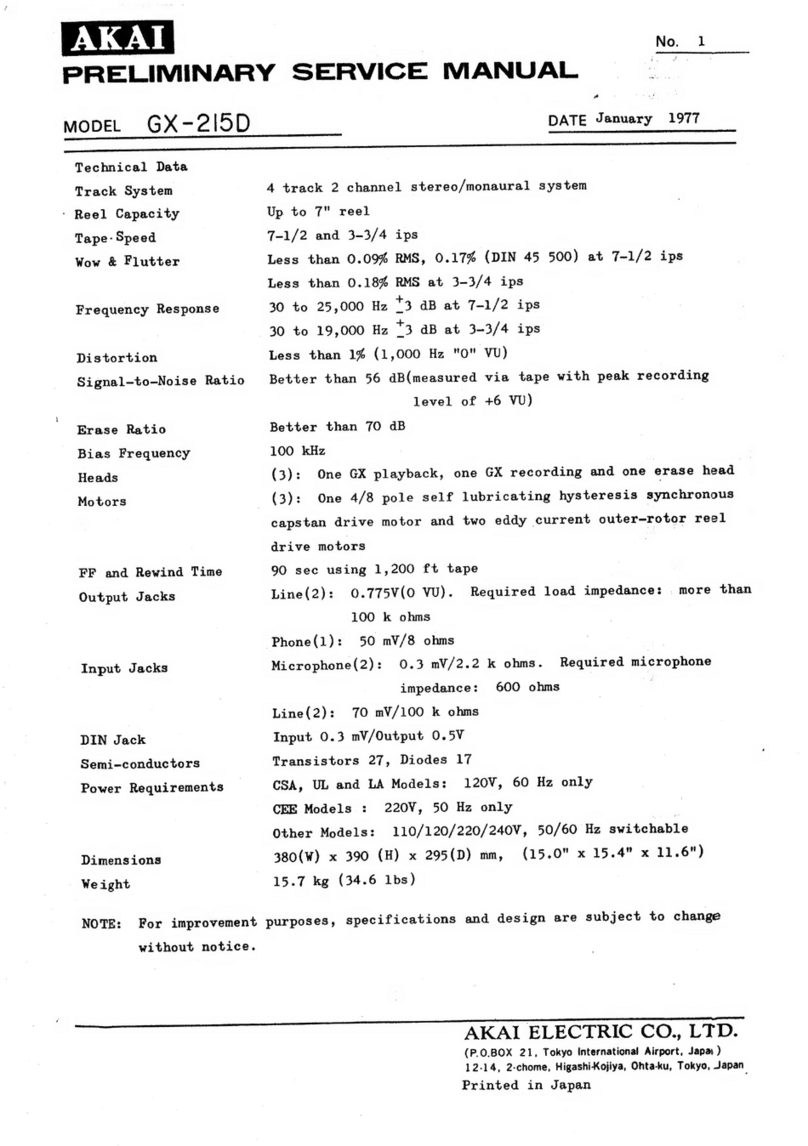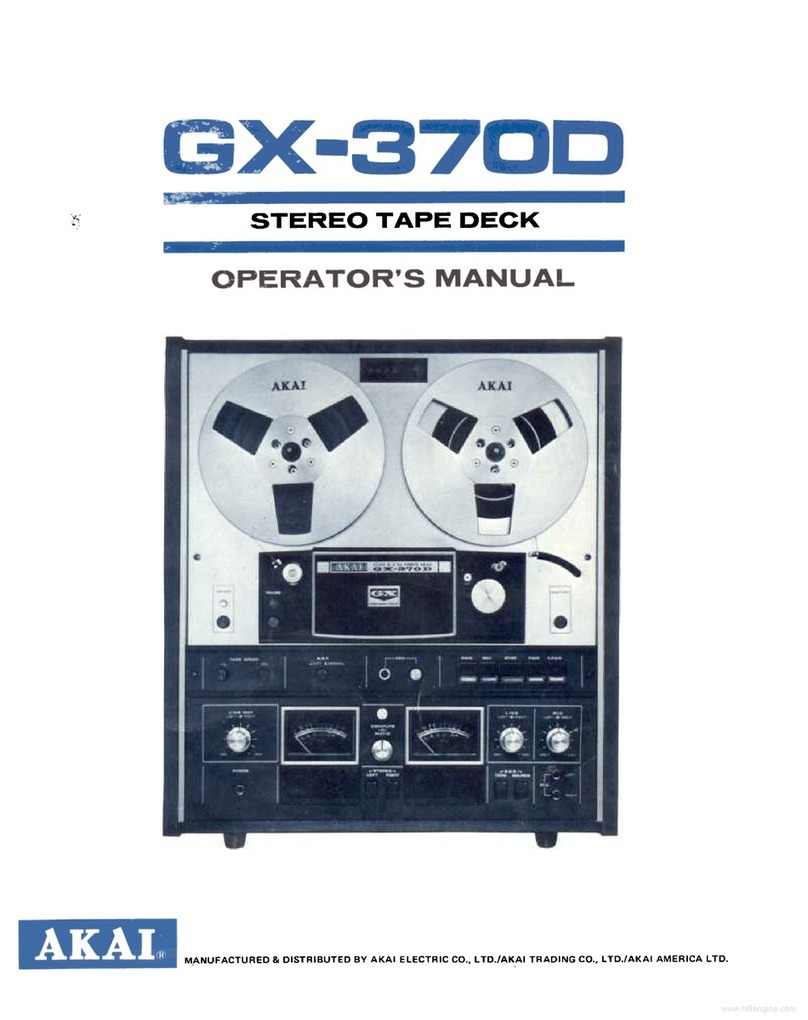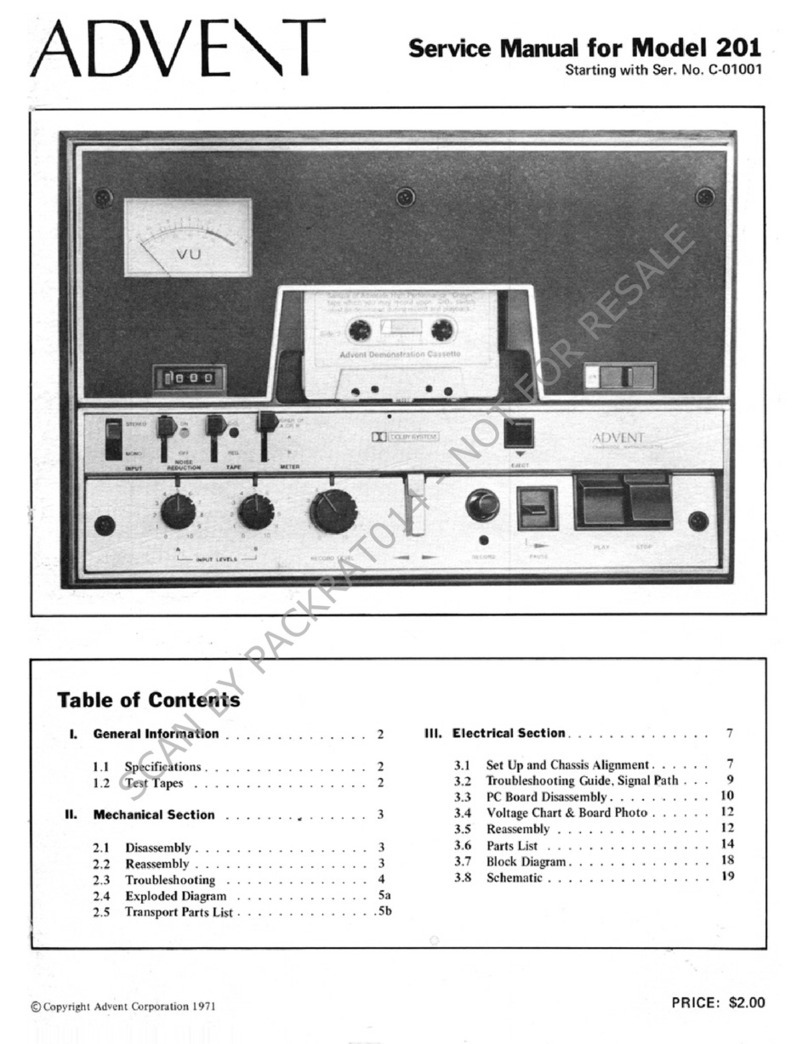FLUORESCENT LEVEL METER
The
FL
Level
Meter
of
this
unit
is
a
new
type
meter,
and
is
completely
different
in
principle
than
conventional
level
meters
which
have
indication
needles.
It
can,
however,
be
used
the
same
way
for
adjustment
of
the
recording
level.
During
playback
it
indicates
the
playback
level,
and
during
recording
it
indicates
the
recording
level.
In
addition,
because
the
meter
of
this
unit
can
be
used
for
both
peak
and
VU
indication,
it
is
possible
to
make
record-
ings
with
a
good
signal-to-noise
ratio,
with
little
distortion,
and
with
the
tape
recorded
to
its
very
limit
of
saturation
.
When
the
Meter-Brightness/Function
Selector
is
set
to
the
I
"PEAK"
position,
the
word
"PEAK"
will
illuminate
on
the
surface
of
the
meter
.
The
FL
Level
Meter
scales
are
de
si
gned
to
indicate
in
2
colors
to
make
instant
recognition
easy:
yellow
below
"0
I
dB
" ,
and
orange
above
" 0
dB."
I 1.
Adjustment
of
the
recording
level
"VU"
position:
Adjust
so
that
the
illumination
of
the
meter
does
not
exceed
the
"0
dB"
indication
at
the
greatest
signal
level.
I
VU
position
11111111111111111111111111111111111111111111111111+1
3 5 8
(L)
CD
(R)
3 5 B
111111111111111111111111111111111111111111111111111+1
I "
PEAK"
position:
Adjust
so
that
the
illumination
is
up
to
the
"+5
dB"
p
os
ition.
I
In
the
same
wa
y
as
for
the
"VU"
indication,
adju
st
so
that
the
il
luminat
ion
does
not
ex
ceed
the
" 0
dB
"
indicati
on.
Then
set
the
Meter-Brightness/Function
Selector
to
the
"
PEAK"
position
,
and,
if
the
illumin
a
tion
moves
as
hi
gh
as
the
"
+8
dB"
position
,
use
the
Input
I
Level
Controls
to
reduce
the
level
so
that
the
meter
illu
min
ate
up
to
the
"+
5
dB
" p
ositio
n
when
the
Meter-
Brightne
ss/F
un
c
tion
Selector
is
set
to
the
"P
EAK
"
position.
PEAK
position
11111111111111111111111111111111111111111111111111111111111111111111111+1
I
(L)
E 1
-1+
(R)
-
1
111111111111111111111111111111111111111111111111111111111111111111111~
I
I
I
I
2.
Difference
in
illumination
at
the
"PEAK"
and
"VU"
positions
:
Unlike
ordinary
level
meters,
the
EL
Level
Meter
of
this
unit
has
a
fast
indication
response,
responding
with
perfect
co
rrespondence
to
input
signals
. It
can,
therefore
be
used
for
very
precise
indication
of
peak
signals.
s
ignals
.
The
illuminated
indications
differ,
as
shown
below,
depending
upon
whether
the
setting
is
to
the
"
PEAK
"
position
or
to
the
"
VU"
position
.
VU
position
111111111+1
u
(L)
-+-
(R)
I"''''''~
e 3
r)
:3
al
3
S
IS
e
'
..
"
PEAK
position
111111111111111111111111+1
Momentary
sound
(L)
(R)
".
I
0
0
!XI
3
15
&
+
B
111111111111111111111111+1
(R)
(L)
~
Continuous
sound
(L)
(R)
VU
position
1111111111111111111111111111111111+1
:)
5 8
!XI
1
'3
15
11111111111111111111111111111111111+1
PEAK
position
1IIIIIIIIIIIIIIItlltllllllllllllllllll+l
:3
5
/1
F',
III
...
, 3 0 3
~
1
1111111111111111111111111111111111111+1
3.
Selection
of
brightness
of
FL
Level
Meter:
The
Meter-Brightness
/
Function
Selector
can
be
used
to
select
either
of
tw
o
degrees
of
brightnes
s o f
th
e
FL
Level
Mete
r.
When
it
is
set
to
the
"dim"
position,
the
brightness
is
less
than
at
the
"bright
"
position,
and,
wh
en
it
is
set
to
the
"bright"
position,
the
Meter-Brightness-Adjustment
Control
on
the
re
ar
panel
can
be
used
for
further
adjust-
ment
to
any
desired
degr
ee ·
of
bright
ness
between
the
"dim
"
and
"
bright"
illumination
.
MONITORING
To
listen
to
the
recording
as
it
is
being
made,
sim
ply
con-
nect
s
tereo
headph
ones
(80)
to
the
Headph
ones
Jack
,
You
may
also
listen
to
the
program
as
it
is
being
recorded
if
your
rece
iver
or
amplifier
is
equipped
with
a
tape-moni-
tor
switch.
-8-
